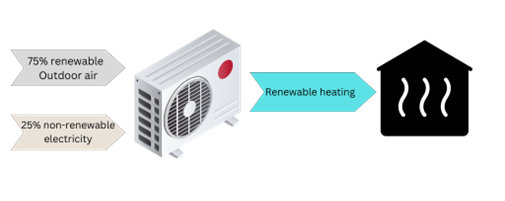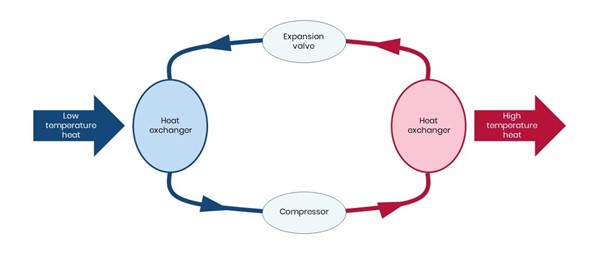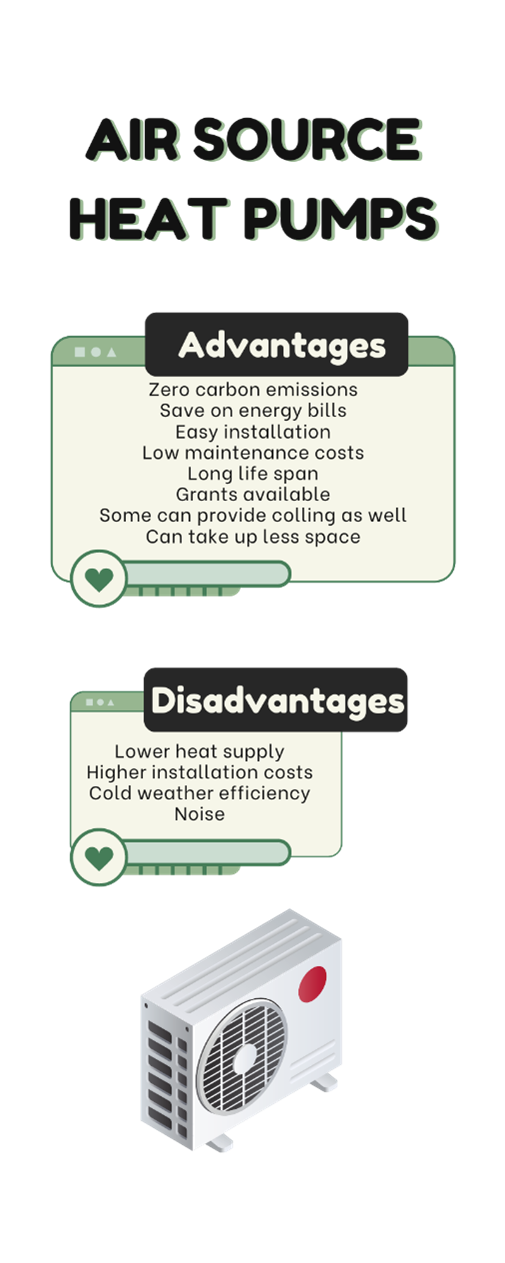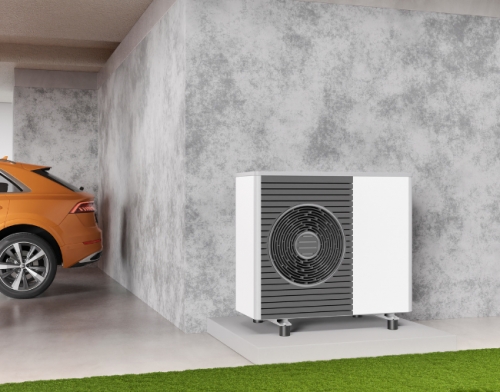What are Air Source Heat Pumps
ASHPs are a form of heating system that efficiently absorbs heat energy from the surrounding natural air and converts it into a usable form that can be used to heat your home or warm water. Owing to their high-efficiency levels, they can extract heat even when temperatures are very low in the UK.
ASHPs do not generate heat. They move heat from one place to another. By using thermodynamics, they can increase the temperature level of the heat they have moved. It uses a refrigeration cycle to move heat from the air outside and transfers it as useable heat in your home. The basic operation of a heat pump is essentially the same as a refrigerator or an air conditioner, but as a heat pump produces more heat than the electricity it uses, it is extremely efficient. These box-shaped units are usually fitted to the side of your home.
How do ASHP work?
Air temperatures above c.-4 degrees contain some sort of energy which is absorbed by an ASHP unit as heat and uses it to heat your house. The absorbed heat is converted into a liquid form. The liquid then passes through a compressor, which increases its temperatures before transferring the resulting high-temperature heat to the hot water and heating circuits.

ASHPs require electricity to operate but the heat output outweighs the electricity input since they extract considerable amounts of renewable energy from the natural environment. This low consumption of electricity means they are a cost-effective form of heating.
There are two main types of air source heat pumps:
Air to water heat pumps
Used in wet central heating systems, it works in the reverse way to a fridge. Refrigerant contained in tubes is warmed by outdoor air passing over them, which then passes through a compressor that increases the pressure and heat. When the pressure of the refrigerant increases, the temperature also increases. When the pressure decreases, the temperature decreases. This relationship between pressure and temperature is the key to how a heat pump works. The refrigerant and a heat pump use electricity to compress this refrigerant, increasing the pressure and therefore the temperature.
As the refrigerant’s heat is transferred to your home through the heat exchanger, it cools down a little. The refrigerant is then allowed to expand so that it cools even further. It’s now cold enough to absorb more heat from outside and begin the process again.

The heated liquid moves to a heat exchanger and pumps through the radiators and taps. As a heat pump captures heat that is already present in the environment, the system itself does not burn any fuel and therefore emits no carbon dioxide.
Air to air heat pumps
These work by taking outdoor heat from the air and transferring it through a network of fans.
Both types of air source heat pumps work most effectively when the home is properly insulated to establish a constant temperature. Another advantage is the same system can be used to cool the house in summer and warm the house in winter. However, air to air heat pumps is not eligible in the Boiler Upgrade Scheme.
Costs
The installation of an ASHP can take little time depending on the output and complexity of the system, but can also run into a few thousand pounds. The air source heat pump itself will vary in price according to the size and quality of the unit, but the reliability and low maintenance can see pumps last up to 20 years trouble free operation. With the Government backed Boiler Upgrade Scheme potentially offering some initial expense regain, an ASHP may well be a worthwhile investment for the future of your home. This grant will offer homeowners who successfully apply an upfront payment of £5,000 towards the cost of installing an air source heat pump. Households in Scotland and Wales may also be eligible for funding through the Warmer Homes Scotland scheme and the Nest Scheme Wales.
A Net Present Value (NPV) analysis carried out by the HeatPump.org.uk to provide evidence of the cost effectiveness of heat pumps and the benefits they would bring by using them as a heating technology in new build homes shows that when comparing gas boilers with heat pumps, the investment decision for ASHPs is favourable, presenting a lower cost for this technology.
The cost of a unit of electricity is currently 28p per kWh and the average efficiency of an air source heat pump is around 220% to 320%.
In a property that has an annual heat load of 15,000kWh, you would expect the electric use to be somewhere between 4,700kWh and 6,850kWh, which is an annual running cost of between £1,320 and £1,920.

Although the cost of adopting air source heat pump technology could put some homeowners off, the government has announced plans to install five million by 2030 with zero refurbishment costs. However, the benefits outweigh the costs. As the technology has become more affordable, the future of ASHP is here now. The latest DC inverter air source heat pump models are efficient enough to meet the Future Homes Standard, intended to move all new properties away from fossil fuels, provided there is adequate insulation, will also help save energy and money.
With the UK Parliament banning gas fired boilers in all newly built homes from the start of 2025, the best alternative is air source heat pumps. If the UK hopes to get close to its target of 600,000 a year heat pumps installed by 2028, it’s going to need long-term policy support, a strong installation chain, and influencers who can educate the public on the benefits of heat pumps. With a well-insulated home, devices able to perform air-conditioning and heating cheaper than using alternative fuels, air source heat pumps are the future of heating.
If you would like to find out more about Air Source Heat Pumps from isoAIR experts or to find out if ASHP are a suitable solution, please contact isoAIR on +44 (0) 1293 827 702 or email This email address is being protected from spambots. You need JavaScript enabled to view it.







